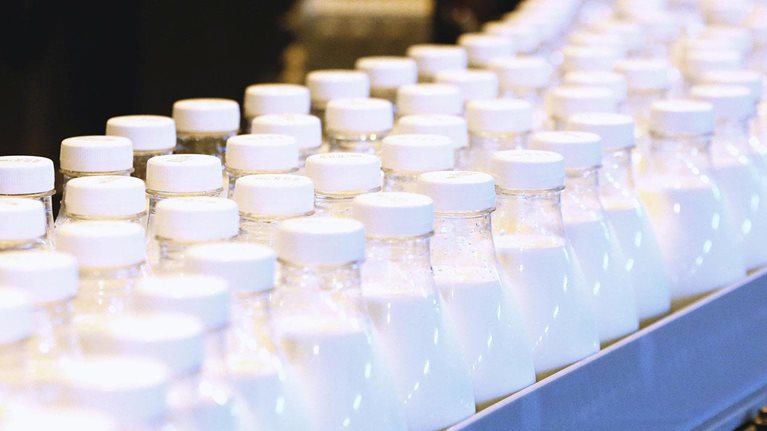The US dairy industry is currently confronted by profound changes in patterns of demand and supply. Headwinds for the sector include rampant inflation, concerns about labor availability, and disrupted supply chains.
How are dairy leaders negotiating these obstacles? To answer this question, McKinsey conducted a survey of 20 United States-based CEOs and senior dairy executives in the fourth quarter of 2021, augmenting this with in-depth interviews.1 We asked executives across the value chain which topics were top of mind for them; how inflationary pressures on labor, freight, and commodities have affected their business models; about their vision for the future; and their thoughts on new ways of working. What we found was an industry contemplating the future with positivity and resilience, despite significant challenges.
This article summarizes our findings and offers recommendations: strategies to help dairy leaders position their companies for long-term growth amid disruptions—such as climate events—which are likely to arise more frequently in the future.
A sector well positioned for 2022
Despite a difficult environment (including COVID-19’s challenges), 2021 proved a stable year for the industry: three-quarters of surveyed dairy leaders reported neutral or improved margins, a two percent increase from our 2020 survey. This holds true across companies of varying size and product specialization, with respondents ranging from executives of private companies valued at over $1 billion, to heads of smaller cooperatives with revenue of under $100 million, to businesses built on a single product. Companies are surviving and expanding by investing in workforce development, strong capital expenditure, and productivity improvement.
Several strategies can be credited for this solid performance. Recognizing new consumer behaviors has helped dairy products stay top of mind. Whereas fluid-milk sales in the US have declined over the past five years, other dairy-product categories have seen significant growth. Indeed, 79 percent of executives saw increased demand for their product or services over the last year.
Sector leaders report large, sustained demand for butter, cheese, and ice cream, spurred by greater consumer enthusiasm for both home cooking and occasional indulgence. A number of executives are optimistic about fluid-milk sales, which should be boosted by schools re-openings in the COVID-19 recovery, as well as the success of new types of flavored and vitamin-enhanced milk.
The industry has continued adapting to growing consumer preferences for clean eating and ethical consumption. Nearly 40 percent of survey respondents consider sustainable packaging an opportunity for investment. More than half also see opportunities in food-industry trends for localized supply chains, health and wellness consciousness, responsible animal management, and transparency and traceability of products (Exhibit 1]. Seven in ten executives are planning to expand their portfolios in 2022, including adding protein-enriched and lactose-free products, and products with claim of origin (Exhibit 2).


Thus, survey respondents are generally optimistic about future growth. Over the next three to five years, over 90 percent of executives foresee product innovation increasing, and over 90 percent predict increased investment in manufacturing innovation. Furthermore, nearly 80 percent of executives expect revenue growth of over 3 percent in the next three years, while three-quarters anticipate even greater volume growth.
Would you like to learn more about our Agriculture Practice?
Looking ahead: concerns for the future
Yet the future remains volatile and uncertain. The majority of respondents expect margin growth of only 1–2 percent, indicating that high costs are still a substantial cause for concern—among other troubling factors. In one-on-one interviews with executives about their worries, several key themes emerged:2
- Sustained inflation: The sustained inflation that plagued 2021 seems set to continue, especially as industries transition to more sustainable, often more expensive ways of operating. Globally, this is executives’ chief current concern. Whereas sales are not typically a large worry, prolonged cost increases could slash margins, and dairy companies may continue to operate under stress, with pressure to innovate in an under-resourced environment.
- Labor market: In today’s labor market, sectors of the industry have struggled to attract a vibrant and reliable workforce. Executives are experimenting with investment in labor-attracting options: a quarter have found higher wages effective in drawing talent, and a third have created, or budgeted for, a dedicated DEI position. However, labor shortages and costs are likely to be long-term issues. More and more, plants are competing for a shrinking pool of workers, while adapting to higher wage and benefits costs.
- Supply chain disruptions: Dairy companies remain concerned about supply chain disruptions. In general, companies heavily reliant on certain geographies for sourcing or delivering goods have suffered impacts to the supply chain, in part due to the lingering effects of COVID-19—including lockdowns, port congestion, and a scarcity of shipping containers and truck drivers. Suppliers have gained even more pricing power, preventing smooth negotiations; and the limited availability of specialty ingredients and hard commodities has created delays within manufacturing and processing plants, sometimes hampering expansion plans.
- Commodity shortages: These supply-chain disruptions and demand increases also cause commodity shortages, which bring complex challenges. One executive disclosed having been on allocation for the past 18 months. In response, more than half of surveyed executives have rationalized stock-keeping units (SKUs), while two-thirds had to put customers on allocation.
- Technological excellence: Achieving technological excellence remains a major industry goal. As in 2020, only a low number of executives (ten percent) rated their company as very agile or fast in responding to consumer trends, seizing market opportunities, and responding to volatility and uncertainty. No executive reported having industry-leading digital and analytics capabilities. However, six in ten invested more in digital and analytics capabilities in 2021 than 2020.
- Global crisis: Another global crisis like the pandemic could destroy much of the progress that dairy companies have made in implementing safety protocols. Executives worry about being able to continue supplying their customers if manufacturing or processing plants have to shut down for health and safety reasons. A new level of anxiety seeping into the work environment also appears to be encouraging employee attrition.
And yet, despite these anxieties, almost every executive we spoke to recognized opportunities for growth during these difficult times. “If you are proactive in the face of hardship, it can be exciting to reimagine your business,” one explained. Another expressed how “volatility creates opportunity for true tactical shifts.” Our analysis points to several key recommendations to help innovative leaders on that path.
Key recommendations
- Expand the business: Despite impediments, many dairy businesses managed to launch productivity initiatives, expand plants, and build new product lines in 2021. Coupled with the enormous demand for a variety of dairy products, there are countless opportunities for companies to grow, financially and sometimes geographically.
- Diversify products: As one dairy executive put it, “If dairy products were launched today, they would be a super food.” Although the plant-based food market is expanding, there also appears to be a growing recognition of dairy’s nutritional power. With the success of products such as kefir and probiotic supplements, among many others, executives expressed confidence about continuing to discover and reformulate products.
- Implement dynamic pricing: When inflation goes up, margins can go down—unless companies have the power to protect their margins by raising prices. But this is tricky to do when consumers are also living with ongoing inflation. The key is to calibrate the company’s value proposition correctly. Getting the most value from pricing requires setting the right initial price, optimizing discounts and rebates, and managing leakage.
- Establish dairy as an employer of choice: By elevating the dairy industry as a dynamic work environment that offers financial security and skills training, while fostering DEI, executives can attract talent and see lower attrition rates. This can be enhanced with individually tailored schedules, needs-based offerings such as child and elder care, and rotational upskilling programs.
- Implement a sustainability strategy: As we noted in 2020, consumers expect transparency about emissions and related issues and initiatives. Paying attention to localizing the supply chain, decarbonizing, and promoting animal welfare will prove integral for the longevity of the industry.
While the US dairy industry is facing substantial challenges, industry leaders are optimistic for the years ahead. Executives are investing in resilience and adaptability, accepting that event-driven disruptions will continue to happen, as will near-term pressures like inflation and supply-chain bottlenecks. With proper attention given to the concerns around labor, supply chains and inflation, the world can look forward to dairy’s successful recovery.

